Space
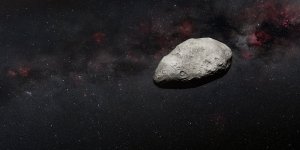
NASA’s newest astrophysics observatory wasn’t designed to look for small objects in our solar system, but scientists using its Mid-Infrared Instrument may have done just that. »
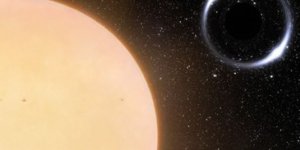
Gemini North Telescope on Hawaii reveals first dormant, stellar-mass black hole. »
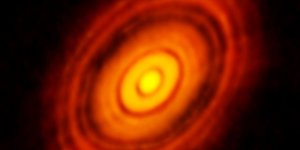
Little ‘hurricanes’ that form in the discs of gas and dust around young stars can be used to study certain aspects of planet formation, even for smaller planets which orbit their star at large distances and are out of reach for most telescopes. »
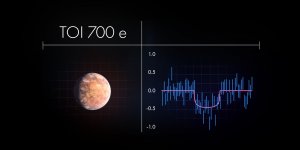
Using data from NASA’s Transiting Exoplanet Survey Satellite, scientists have identified an Earth-size world, called TOI 700 e, orbiting within the habitable zone of its star – the range of distances where liquid water could occur on a planet’s surface. The world is 95% Earth’s size and likely rocky. »
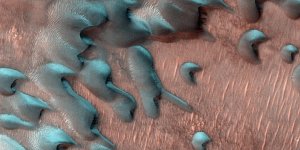
Cube-shaped snow, icy landscapes, and frost are all part of the Red Planet’s coldest season. »
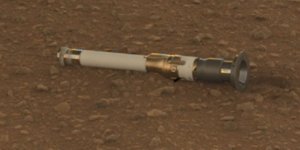
Filled with rock, the sample tube will be one of 10 forming a depot of tubes that could be considered for a journey to Earth by the Mars Sample Return campaign. »

After revealing a trove of details about the moons Ganymede and Europa, the mission to Jupiter is setting its sights on sister moon Io. »

An international team of astronomers, including scientists at the Universities of Cambridge, Hertfordshire and Oxford, has reported the discovery of the earliest galaxies ever confirmed in our Universe. »

A team led by researchers at the University of Montreal has found evidence that two exoplanets orbiting a red dwarf star are "water worlds," where water makes up a large fraction of the entire planet. These worlds, located in a planetary system 218 light-years away in the constellation Lyra, are unlike any planet found in our solar system. »

Aside from a tapestry of glittering stars, and the glow of the waxing and waning Moon, the nighttime sky looks inky black to the casual observer. But how dark is dark? »

NASA’s James Webb Space Telescope just scored another first: a molecular and chemical profile of a distant world’s skies. »

NASA’s James Webb Space Telescope has revealed the once-hidden features of the protostar within the dark cloud L1527, providing insight into the beginnings of a new star. »

A team of astronomers have found that planet formation in our young Solar System started much earlier than previously thought, with the building blocks of planets growing at the same time as their parent star. »
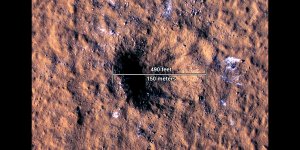
The agency’s lander felt the ground shake during the impact while cameras aboard the Mars Reconnaissance Orbiter spotted the yawning new crater from space. »

The observatory’s Mid-Infrared Instrument (MIRI) provides a different view of the famous pillars, revealing young stars that have not yet cast off their dusty “cloaks.” »
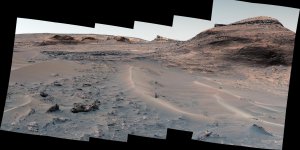
The rover has arrived at a special region believed to have formed as Mars’ climate was drying. »

Astronomers have observed directly for the first time how intense light from stars can ‘push’ matter. »

Most theories behind the formation of the moon propose that it originated from the coalescence of debris over the years after earth collided with an enormous mass. »

Using the European Southern Observatory’s Very Large Telescope astronomers have discovered the heaviest element ever found in an exoplanet atmosphere — barium. »

An international team of researchers has revealed new evidence for the possible existence of liquid water beneath the south polar ice cap of Mars. »

Two of NASA’s Great Observatories, the James Webb Space Telescope and the Hubble Space Telescope, have captured views of a unique NASA experiment designed to intentionally smash a spacecraft into a small asteroid in the world’s first-ever in-space test for planetary defense. »

After 10 months flying in space, NASA’s Double Asteroid Redirection Test (DART) – the world’s first planetary defense technology demonstration – successfully impacted its asteroid target on Monday, the agency’s first attempt to move an asteroid in space. »

ESO’s Very Large Telescope has imaged the result of a spectacular cosmic collision — the galaxy NGC 7727. This giant was born from the merger of two galaxies, an event that started around a billion years ago. »

The latest findings provide greater detail on a region of the Red Planet that has a watery past and is yielding promising samples for the NASA-ESA Mars Sample Return campaign. »

While astronomers have seen the debris from scores of exploded stars in the Milky Way and nearby galaxies, it is often difficult to determine the timeline of the star’s demise. »

Below the thick icy crust of Jupiter’s moon Europa is a massive, global ocean where the snow floats upwards onto inverted ice peaks and submerged ravines. »

On March 27, Lucy’s science team discovered that the smallest of the mission’s Trojan asteroid targets, Polymele, has a satellite of its own. »

A team of international experts, renowned for debunking several black hole discoveries, have found a stellar-mass black hole in the Large Magellanic Cloud, a neighbour galaxy to our own. »

Approximately 1,800 miles beneath our feet, swirling liquid iron in the Earth's outer core generates our planet's protective magnetic field. This magnetic field is invisible but is vital for life on Earth's surface because it shields the planet from solar wind—streams of radiation. »

Pluto's life partner, Charon, has a disarming red 'cap'. Ever since New Horizons snapped the moon's rust-tinted north pole on its 2015 flyby, scientists have pondered the planetary processes responsible for leaving such a bold landmark. »

Observations of the giant planets reveal excess haze on Uranus affects its hue. »

Will biosignatures be found in extraterrestrial oceans? »

A team of astronomers, with the help of the European Southern Observatory’s Very Large Telescope (ESO’s VLT), have observed a new type of stellar explosion — a micronova. »

Ozone in the atmosphere found to have weakened one of Earth's main cooling mechanisms. »

Estimated to be magnitude 5, the quake is the biggest ever detected on another planet. »